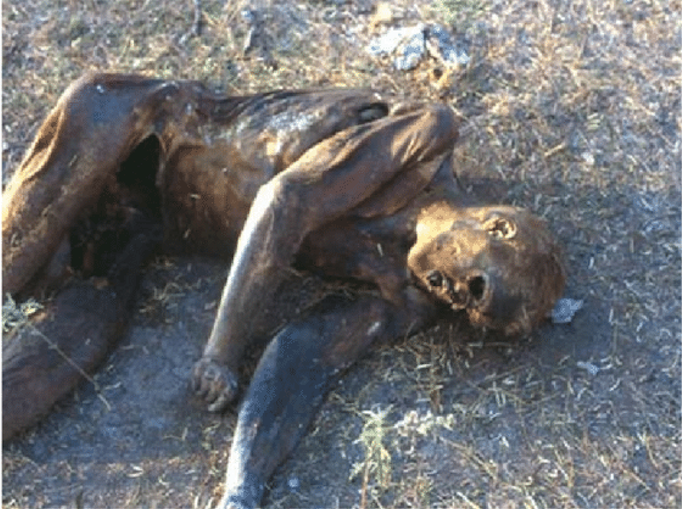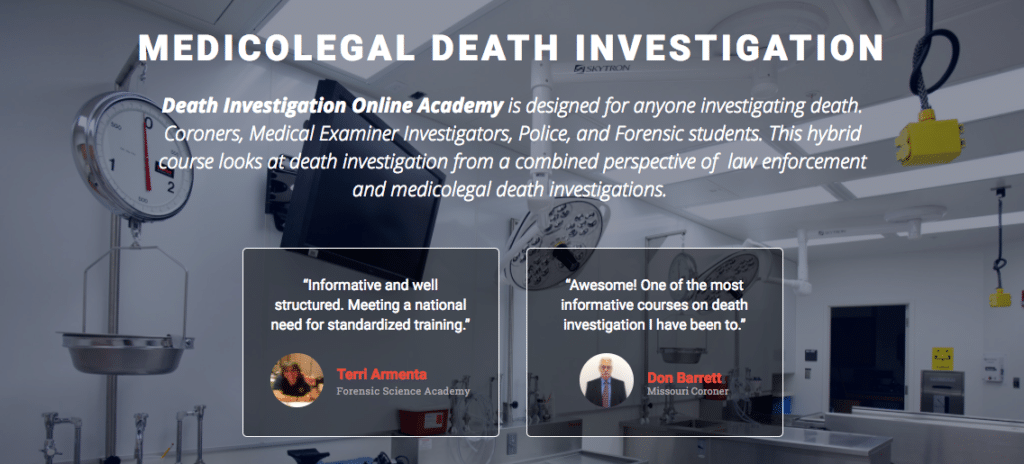
Postmortem fingerprint collection is a routine part of many forensic death investigations. Although the production of postmortem prints is usually straight forward, several obstacles and scenarios can make the collection difficult. A common challenge occurs when finger pads are mummified. Several current techniques allow for softening and rehydration of mummified finger pads; however, despite the employment of such techniques, the production of adequate postmortem fingerprints can remain difficult.
The Pima County Office of the Medical Examiner has earned national recognition for breakthrough work with fingerprinting unidentified bodies of people, including border crossers, who have died in the desert.
In arid conditions such as Southern Arizona’s desert, it doesn’t take long to run out of water. This, as well as sickness, injuries and other accidents, can lead to fatalities and the dehydration process doesn’t stop after death. Many of the bodies brought to the PCOME’s well lit, tiled hallways have begun to mummify.
When nobody knows who the person was, mummification makes identification an even greater challenge.
It’s possible to rehydrate the tissue using sodium hydroxide. The process can take up to 72 hours and requires a mixture of attention and patience.
If printing is attempted too soon, the prints are still distorted — but waiting too long can mean permanently losing the fingerprints.
“The risk again is always you can dissolve the tissue if your solution’s the wrong concentration or you leave the tissue in the solution for too long and that kind of thing,” Hess said. “So we have a fairly rigid process.”
It was a process that Hernandez began helping to develop after he started working at the PCOME in 2000.
This article was an excerpt from a full article by the Tucson Sentinel January 2014, read the full article HERE
To hear the full story with Gene Hernandez with Pima County Arizona on how this process works listen to this episode.
.

Coroners, Medical Examiner Investigators, Police, and Forensic students. This hybrid course looks at death investigation from a combined perspective of law enforcement and medicolegal death investigations.
MLDI online Academy is a Nationally Accredited online training designed to teach all aspects of death investigation and scene management. Unlike any other coroner training today, this course offers a blended learning style combining online self-paced video training, along with opportunities for live interaction with instructors several times throughout the program, and a unique private Facebook group open only to students of Coroner School™ where everyone can interact and ask questions.
MLDI online Academy is a six-week guided course with certified instructors. However, at the end of the six weeks, you still have access to all videos, downloadable material, and the private Facebook group. You can return to the online school anytime to finish up the courses or as a refresher in certain topic areas.
Medicolegal Death Investigation Scene Kit

This exclusive first of its kind Medicolegal Death Investigation (MLDI) kit contains all the items you need to document and collect evidence from the most important piece of evidence at any death scene – The Body. Designed for Coroners, Medical Examiner Investigators, and anyone responsible to investigate and process a death.
This kit is equipped to collect fragile evidence such as DNA and fibers, take post-mortem temperatures, document the scene through photography and sketching, as well as properly collect transport, and store material evidence.
This MLDI Kit can be used in large agencies for multiple MDI’s or one single kit for smaller agencies. Packaged in a sturdy Pelican carry case with custom dividers and a pocketed pouch system. Built strong to withstand the demands from scene to scene.
Click HERE for more information


The Death Investigation Training Academy was founded to play an integral role in the death investigation community. The need for quality accredited training is in short supply and high demand. Using a combination of classroom training, live on site scenario exercises, and web-based training, the Death Investigation Training Academy is filling the need of 21st-century investigators.
